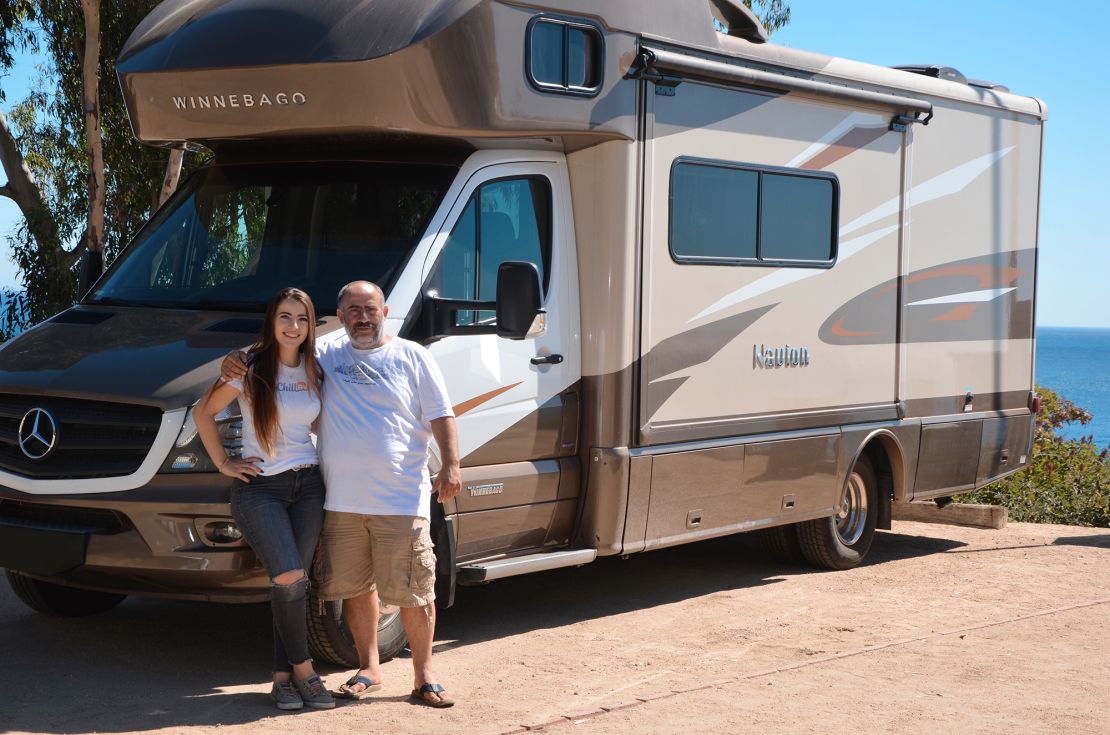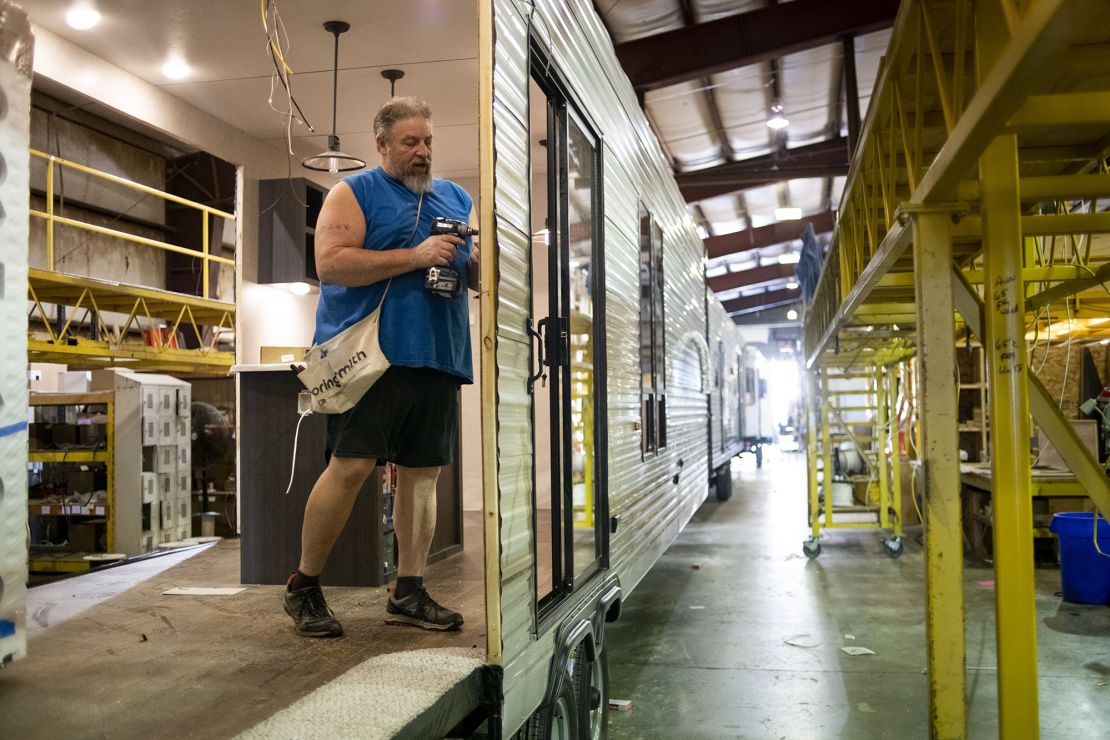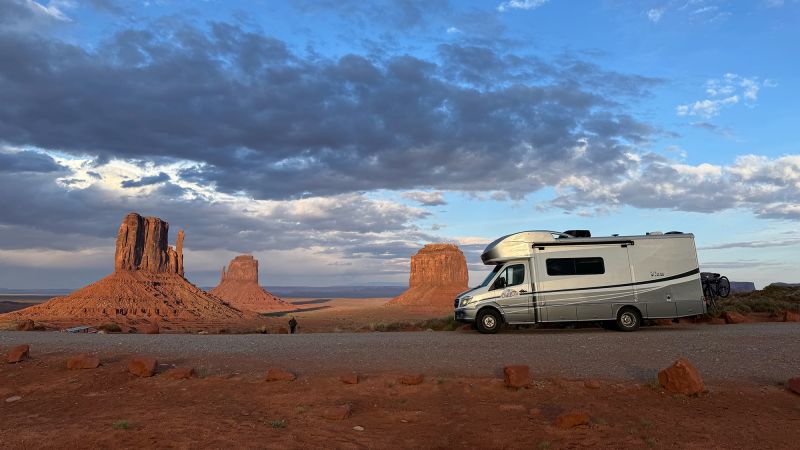At this time of year, a reservation with Chill RV Rentals isn’t usually the easiest to come by.
The Los Angeles-based company’s 16-camper fleet is typically booked solid, with the RVs oftentimes reserved weeks in advance.
That’s just not the case this year, said Nika Shneyder, who started the recreational vehicle rental business with her father in 2016. Bookings are light; plus, the people who are traveling are taking shorter trips, she said.
“We’re definitely seeing demand for RV travel slowed down compared to previous years, and I don’t think it has to do with people coming out [the pandemic] and going on different kinds of trips,” Shneyder said. “I actually think it has a lot to do with people having less discretionary spending available.”
She added: “I think we’re going to pick up this summer, in July and August for sure; but historically speaking, we would have been busier by now.”
On the retail sales side, there are similar stories at play: Businesses are seeing softer, but improving, demand; consumers are showing some hesitancy but still are spending some; and industry members are exhibiting cautious, but growing, optimism.
The industry appears to be not only getting back into gear but also settling into a familiar groove: its role as an economic bellwether.
When consumer sentiment falters or the economy starts to teeter, RV sales follow suit, said Michael Hicks, an economics professor at Ball State University and director of Indiana University’s Center for Business and Economic Research.
RVs are typically large-dollar items for individuals and families, costing about $12,000 to $15,000 for a small, pop-up, tow-behind trailer, to some that run well north of $250,000 or more for a motorhome or luxury offering.
“People don’t make these large, luxury purchases unless they’re actually feeling better about the economy,” said Hicks, who follows the RV industry closely. “It’s so sensitive to interest rate changes, which often precede a downturn.”
RV shipments, a proxy for sales, are starting to pick back up after having bottomed out last year — an aftershock of a wild, pandemic-era upheaval.
So, if business is on the upswing — especially at a time when the dual forces of elevated inflation and high interest rates are serving as headwinds — that could bode well for the economy as a whole, he said.
Still, while that economic indicator doesn’t appear to be flashing red right now, it likely will take interest rates falling from their current 23-year highs before it turns a solid green.
“We think [interest rate cuts] will offer a little bit of a trigger to consumers becoming more active again,” Michael J. Happe, president and chief executive officer of Winnebago Industries, said during the company’s March earnings call.
The cost of borrowing is so high right now that Chill RV hasn’t been able to add new vehicles to its fleet.
“We’ve been able to get a little creative with it,” Shneyder said. “Instead of purchasing our own inventory, because the rates are so high, we’ve opened up a consignment program where we rent out privately owned RVs and do a profit-share.”
And that consignment well is pretty deep right now, a reflection of the pandemic-era #YOLO, #vanlife purchases that just didn’t pan out for some.
“We find people who during Covid went out and bought an RV for themselves, and they’re just sort of done with it, they no longer use it,” she said. “And so now we’ve rented it out for them.”
Five of the 16 vehicles in Chill RV’s fleet are on consignment, she said.

The big spike in sales seen during the pandemic turned the entire industry on its head and knocked its economic barometer out of whack, Hicks said.
“Potential buyers moved to purchase RVs earlier than they’d originally planned,” he told CNN. “So, some folks who were planning on buying one later jumped at the chance to hit low borrowing rates in the wake of the pandemic. This ate into 2022 and 2023 sales.”
RV shipments rocketed north of 600,000 in 2021, a nearly 40% jump from the year before. They moved down to a historically strong, but noticeably smaller, 493,000 the next year, according to data from the RV Industry Association.
By 2023, orders fell back to Earth — hard — clocking in at a mere 313,000.
Dealers had to work through inventory while also navigating a steep drop-off in demand, said Monika Geraci, spokesperson for the RVIA. In addition to sales being pulled forward during the pandemic, other purchases were put on the blocks because of inflation and high interest rates, she said.
Consumer spending on RVs did fall off last year, as compared to 2021 and 2022, inflation-adjusted Commerce Department data shows.
Consumers spent nearly $38 billion in the category of “other recreational vehicles,” which excludes pleasure boats and aircraft, according to Personal Consumption Expenditures data. That’s down from $42.9 billion and $44.1 billion in 2021 and 2022, respectively, but above 2019 spending of $31 billion.
Now, the industry appears to be back at a point of equilibrium, where shipments, production and sales at the retail level are more closely aligned, she added.
The latest forecast from RVIA, released earlier this month, projects shipments to land in the range of 329,900 to 359,100 for 2024, with a median of 344,000 units. That’s expected to grow next year to between 374,200 to 408,600.
The moderate increase is based on the expectation that interest rates are going to start coming down and inflation will cool further to the point people have the financial wherewithal to make the purchase, she said.
“We do know from our surveys that the desire to own an RV and purchase an RV is still there and still is high,” she said. “Inflation, interest rates do just hit people’s pocketbooks and make it a little bit harder to follow through on those desires.”
To fully get a sense of how the RV industry (and, in turn, the broader economy, is faring), one need not look further than Elkhart, Indiana.
The Northern Indiana city that sits 15 miles east of South Bend is known as the “RV Capital of the World.” Many of the leading manufacturers and suppliers have facilities there, resulting in the vast majority of the RVs on US roads being made in Elkhart.
“And even the ones that are not made here are still made here, because all their parts are made here,” said David Titus, co-owner of International RV Wholesalers in Elkhart.

Manufacturing and transportation account for more than 60% of all the jobs held in Elkhart, making the county one of the country’s biggest production hubs, Bureau of Labor Statistics data shows.
When there’s been a downshift in the industry, Elkhart (and its unemployment rate) has reflected that pain.
In March 2009, during the Great Recession, Elkhart County’s jobless rate hit 20.6% and spiked to 30.6% in April 2020, the height of the pandemic lockdowns. Flash-forward to January 2023, when shipments had fallen off due to oversupply and a pullback in demand, and unemployment jumped to 5.6% from 3%.
It’s since moved back down and in April 2024 stood at 3.8%, a tick below the national rate of 3.9% at the time.
“Employment in this sector is ebbing a bit, which is consistent with slower sales,” said Ball State’s Hicks. “However, we haven’t seen any of the large job cuts we did during the Great Recession. [The unemployment rate in Elkhart] suggests optimism by RV producers that the market will strengthen in the coming months.”
At the dealer level, there’s optimism as well.
Customers are still driving on the lot looking to buy an RV, International RV Wholesalers’ Titus said, adding that banks are still happy to lend the money — albeit at more of a premium.
Some customers are leaning toward something a little more modest because of interest rates, he said, adding that they’re also planning shorter trips closer to home — versus the 3,000- or 4,000-mile cross-country haul — because of inflation and fuel costs.
Complicating matters further is a cyclical factor: It’s an election year, and like clockwork, some people appear to be holding off and waiting to see what happens, he said.
“Election years are always off, so we’ll be happy when we get through November,” he said. “Obviously, this is a little more of a contentious election than normal, putting it nicely, than what we’ve seen in the past. It really doesn’t matter who wins, just as long as it’s done.”
Still, sales are softer than they were during the pandemic boom, but they’re trending better than last year and above pre-pandemic times, Titus said.
“You drive through town, everybody’s busy; you can’t go to a restaurant at 6 o’clock and expect to get a table; you go to the store, and it’s busy,” Titus said. “I’m looking at a four-lane road in front of my place right now, and it’s bumper-to-bumper traffic.”
He added: “Here in Elkhart it does seem business as usual. Could business be better? Of course it could. But could it be worse? It sure could.”
Read the full article here
